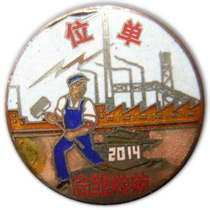Chinese Myth Tuesdays: Dragons!
Edited, with additions, from Fuck Yeah Chinese Myths!

If you’re not from Asia, you’ll be familiar with dragon slaying tales. In Western culture, dragons are evil, but in Chinese culture, they’re benevolent and kind, and made of awesome. Here’s why.
The story goes that in the earliest time in China, people formed clans. Each had an animal to represent their clan, like a pig or a snake, to show how badass they were.
Over time, one clan led by the legendary Yellow Emperor (黃帝 Huángdì) adopted the fearsome traits of animals from the clans they defeated, joining the claws of an eagle, the body of a serpent, the face of a lion, etc. – forming, you guessed it, the dragon.
Shortly after, the dragon clan came out tops and became a symbol for the Chinese people. So the people thought some dragon gods must be at work to make the dragon clan rulers, and that the mandate from heaven came from the dragon gods themselves. That’s why there’s the saying that Han Chinese are 龙的传人 (lóng de chuán rén), or descendants of the dragon, and why dragons are ancient symbols of imperial authority, with the throne in the Forbidden City called the Dragon Throne.
Dragons in Chinese myth come in all shapes and sizes, but are mostly depicted as snake-like with four legs, claws and antlers. They can both fly and swim, and live underwater in palaces of transparent stones and crystal. They can breath fire, water and wind, and control weather and water, especially the sea. Some are invisible, and the best part is they can communicate with each other telepathically, reporting to the mythical Jade Emperor (玉皇大帝 yù huáng dà dì) at the end of every year.
The Buddhists think there are as many dragons as fish in the sea, but there are four Dragon Kings according to legend, who rule the East Sea, South Sea, West Sea and North Sea. Another legend has it that five dragons flew from the West and settled in China to become the five sacred Taoist mountains: 泰山 tàishān in the East (Shandong), 華山 huàshān in the West (Shaanxi), 衡山 héngshān in the South (Hunan), another 恒山 héngshān in the North (Shanxi), and 嵩山 sōngshān in the centre (Henan).
•
Fuck Yeah Chinese Myths! is a tumblr of Chinese myth, history and culture written by Min Xie
















